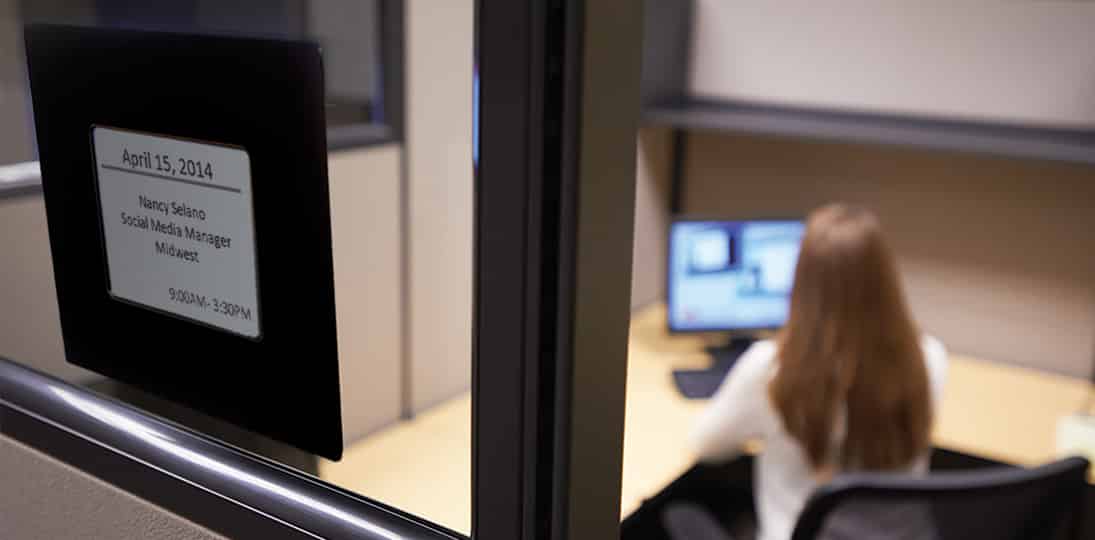During the past 10 years, organizations have noticed a shift in employee work habits. In response, there has been a shift in how workspaces accommodate today’s mobile workforce. New strategies are addressing these space issues, and office hoteling is one fast-growing solution.
In the past, companies operated out of entire buildings or multiple floors with lots of private offices, meeting rooms, and dedicated desks for workers. In recent years, organizations have started eliminating those rows of cubicles in favor of community spaces to:
- Maximize the efficiency of existing workspace
- Allow more teamwork and collaboration
- Accommodate traveling or remote employees who don’t need dedicated space
Some studies indicate that workers only spend about 30% of their time in the office and 45-50% of their time at desks. A lot more people are traveling or working from home and don’t need an office or desk.
Organizations have also noticed that staff do better with different kinds of spaces for different work functions. You might need your own office one day, a meeting room the next day and a collaborative space the next. So why pay for all of that wasted space?
Hoteling provides workspace to employees on an as-needed basis using a reservation system. It reduces the number of desks and offices so it cuts costs. More importantly, it gives workers flexibility to choose the type of workspace they want for different tasks.
Hoteling is possible with handwritten notebooks or simple calendars, but these fail when scaled beyond a few desks. Convenient, scalable scheduling tools are required for success and a single, centralized space management system is critical for large organizations.
>> Find out how our E-Paper Room Signs can help with managing your shared spaces.
>> Download our infographic for 8 Benefits of Office Hoteling with E-Paper Room Signs.
